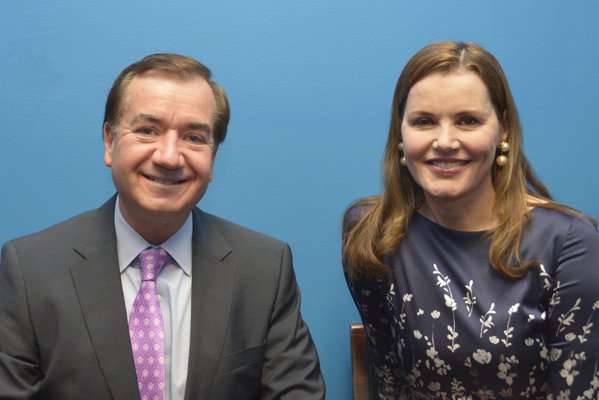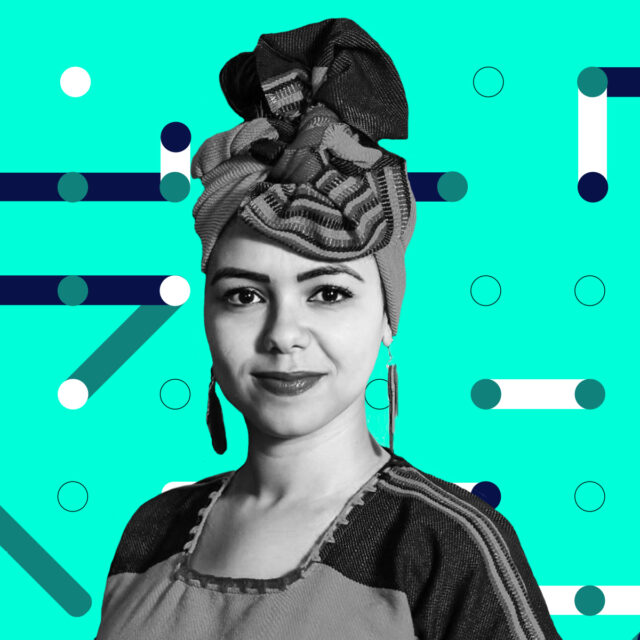By Helena Contes, ONE Policy
Q: What’s more surprising than a House Committee on Foreign Affairs hearing involving multiple Thelma and Louise references?
A: Learning that increasing Internet connectivity in developing countries could lead to a $21 return on investment for every dollar spent.
On November 17, the House Committee on Foreign Affairs held a hearing to discuss the ways that women, especially those in developing countries, could benefit from access to technology, as well as to hear recommendations on how to foster that access.
Witnesses included Sonia Jorge, Executive Director for the Alliance for Affordable Internet; Joyce Warner, Senior Vice President and Chief of Staff for the International Research and Exchange Board; and Geena Davis, Founder and Chair of the Geena Davis Institute on Gender in Media, Special Envoy for Women and Girls for the International Telecommunication Union (ITU), and Academy Award winner.
Chmn @RepEdRoyce met with actress Geena Davis before a hearing on empowering women around the world with technology pic.twitter.com/jop0DWFJzv
— Foreign Affairs Cmte (@HouseForeign) November 17, 2015
The hearing highlighted several key pieces of information about women, development and Internet access. Sonia Jorge of the Alliance for Affordable Internet cited an Intel study estimating that giving women access to the Internet could “contribute between $13-18 billion to annual GDP across 144 developing countries.” Economic empowerment made possible by connectivity isn’t just good news for women– women and girls invest 90% of their earned income into their families and communities.
Access to the Internet can also be a tool to reduce social inequality and improve civil rights. For example, Human Network International recently conducted a case study testing a system which gave Malagasy women, 30 percent of whom report being victims of domestic violence, access to information on their rights from their mobile phones. After using the program, 91 percent of women reported taking on more decision-making in their household.
The Malagasy women’s use of technology to further their own skills and knowledge isn’t an isolated case. A survey of women in developing countries found that of women using the Internet, 75 percent use the Internet to further their education.
However, despite the positive uses that women make of technology, their access to it is limited across the developing world. In his opening statement, Chairman Royce said that,“200 million fewer women have access to the Internet than men. In sub-Saharan Africa, women are almost half as likely as men to be online.”
The bottom line, according to Sonia Jorge, is that “the digital divide exacerbates existing economic and social inequalities and stifles development.”
The speakers identified these three key issues:
- Media representation can hold women back … or push them forward. Media continues to shortchange women and the roles they play. Men hold around 80 percent of STEM (science-technology-engineering-math) jobs in children’s media and the ratio of men to women in films hasn’t changed since 1946. This imbalance of gender representation affects more than just Americans — globally around 80 percent of consumed media is produced in the United States!As Geena Davis pointed out, a lack of female representation in media has a real and negative impact on how men and women see gender roles as they get older. Geena truly practices what she preaches, though, and has a long record of playing strong female characters, as the Committee Members were happy to recall. Rep. Engel noted that she played the first female president on TV. Rep. Frankel remarked on Davis’ swift recovery from blindness in time to appear at the hearing (an affliction her character—a doctor—on the TV show “Grey’s Anatomy” had). These and a smattering of references to Thelma and Louise (and Brad Pitt) and The Long Kiss Goodnight (in which Davis plays a trained assassin) rounded out the Members’ fond recollection of Davis’ varied and impressive career.
- Access can be cost prohibitive. While an entry-level broadband connection costs just 1–2 percent of monthly income across most developed countries, this figure skyrockets to at least 10 percent in most developing countries and can reach over 100 percent of monthly income for people living off of $2 a day in a handful of countries such as Rwanda (where 82% of the population lives in poverty), Namibia (43%), and Cameroon (50%). Women make 30–50 percent less than men worldwide which means they have even less ability to pay for costs associated with Internet access.
- It’s not all about access. Women are more likely than men to report lack of skills as a barrier to Internet use. Policy makers need to address the problem holistically rather than looking at access alone. Women must be introduced to technology earlier and more often!
Here are a few of the recommendations that came out of the hearing:
- Technology is here to stay. We must expand the definition of literacy to include digital literacy and begin introducing girls to technology as early as possible — definitely before adolescence.
- There must be a focus on developing safe, public access points. Internet cafes are often not considered suitable for women, but libraries are a good alternative.
- Access to the Internet must inclusive from the beginning. Policies to expand access to Information and Communications Technology (ICT) should be created in consultation with a diverse group of people, including women, to ensure more robust solutions that benefit all of society.
- We need better data! Governments should invest in the International Telecommunication Union’s (ITU) efforts to expand collection of gender indicators, and support national statistics agencies to do the same.
Finally, the panelists also made a point to remind us that digital inequalities are an extension of real-world inequalities, and that thinking about gender in all aspects of development is critical.
Earlier this year, President Obama said, “the Internet is not a luxury; it is a necessity.” We at ONE agree whole-heartedly with that statement, and believe that empowering women in every way, including through Internet connectivity, will help us achieve the Global Development Goals that much faster and put women into a league of their own.



